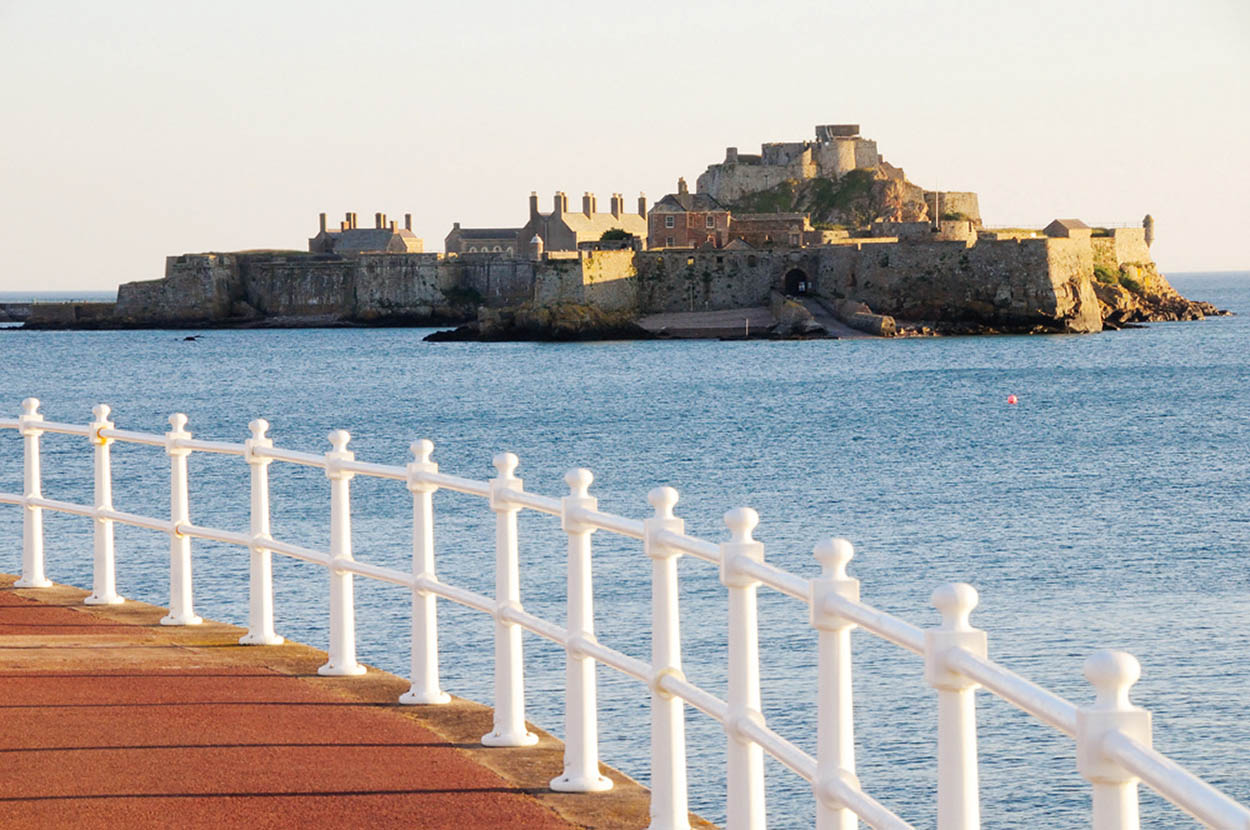
The stunning setting of Elizabeth Castle.
Mockford & Bonetti/Apa Publications
Tour 1: St Helier
This walk around Jersey’s capital, visiting two of the best museums, the lively Central Market and historic Elizabeth Castle, is 2½ miles (4km) and takes a whole day.
Highlights

The stunning setting of Elizabeth Castle.
Mockford & Bonetti/Apa Publications
Jersey’s capital is home to two of the best museums on the island, a spectacularly located historic castle and a central square steeped in history. Although the traffic in the capital is worse than anywhere else on the island, the main shopping thoroughfares, with large stores, boutiques and lively food markets, are pedestrianised. The walk takes you through the historic centre, west to Elizabeth Castle and back along the waterfront.
The town’s origins date back to the sixth century when Helerius, a monk from modern-day Belgium, founded a hermitage on a small rocky outcrop on a tidal islet in St Aubin’s Bay, today known as the Hermitage Rock. Helerius devoted his life to prayer and fasting, but in AD 555, after fifteen years on the island, he was beheaded by a band of passing pirates. A small monastic settlement rose up here, and in the twelfth century, an oratory was dedicated to St Helier.
Growth over the centuries was slow and it was not until entrepreneurial Huguenot refugees arrived in the sixteenth and seventeenth centuries, bringing their skills with them, that the town saw any real expansion. Further growth came about in the late 18th century, funded by all the profits from privateering during the French and American wars. In the post-Napoleonic era, the population was swelled when hundreds of officers from the English army settled in the town. Retired on half pay, they were lured to Jersey by the climate, the low cost of living and the desirable lifestyle. Regency and Victorian houses were constructed, land was reclaimed from the sea, and by 1840 St Helier had taken over from St Aubin as the island’s main harbour.

Hermitage Rock.
Mockford & Bonetti/Apa Publications
Liberation Square
Start at Liberation Square 1 [map] , which was opened by Prince Charles on 9 May 1995, the fiftieth anniversary of the Liberation of the island from German Occupation. It was here that jubilant crowds greeted the British liberators after five long years under German rule. To mark the seventieth anniversary of Liberation in May 2015, Jersey and the other Channel Islands celebrated with a host of entertainment and activities, stretching over five weeks.
The prominent Liberation Sculpture commemorates the event with a bronze group of figures, holding up the Union flag. From left to right the figures represent a Jersey couple old enough to have witnessed the Occupation, a liberator, a Jersey fisherman and a farmer with his wife and children. Overlooking the square on the north side, the Pomme d’Or Hotel was the headquarters of the German navy during the Occupation.
The square used to be the terminus of the Jersey Railway which served the south and east coasts, and it was from the rear of the building on the west side that some 2,200 residents were deported to Germany in September 1942.
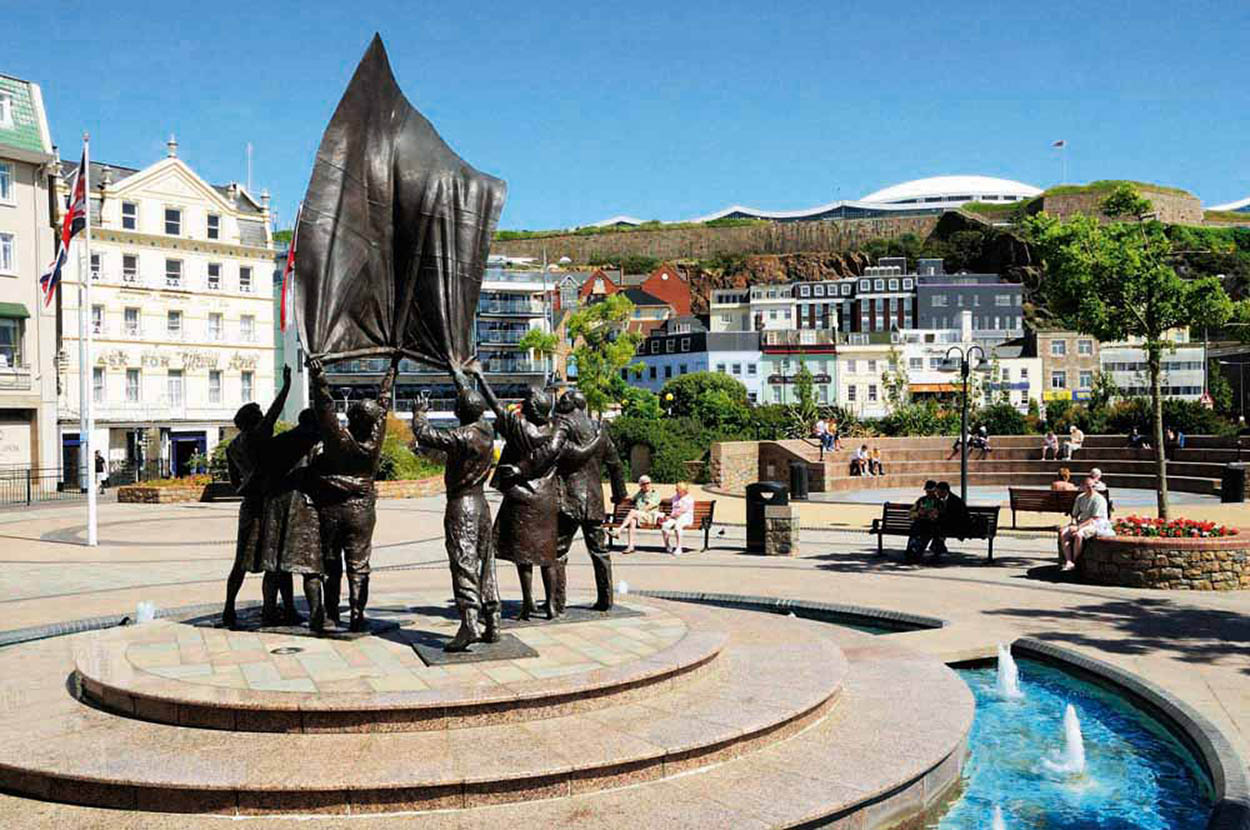
The bronze Liberation Sculpture in Liberation Square.
Mockford & Bonetti/Apa Publications

The Maritime Museum on New North Quay.
Mockford & Bonetti/Apa Publications
Alongside Liberation Square is Liberty Wharf, a covered shopping mall of independent boutiques and major brand stores within original granite warehouses.
Maritime Museum and Tapestry Gallery
Across the busy A1 south of Liberation Square, and looking like something out of Disneyland, the world’s largest Steam Clock is modelled on a nineteenth-century paddle steamer. Local vessels and shipbuilders are commemorated on benches around the harbour. The facade of the otherwise drab Normans building across the old harbour is the canvas for Jersey’s most ambitious piece of street art, ‘Home’, a collaboration between ArtHouse Jersey and Walthamstow-based Wood Street Walls. Designed by British street artist Gabriel Pitcher, this huge mural celebrates the contribution of immigrant communities to the island, and is just one of the many striking pieces of street art dotted around the city, forming part of the St Helier Art Trail (www.jersey.com/inspire-me/inspiration/st-helier-art-trail).
16 New Street
Originally the home of a public notary, the early Georgian House at 16 New Street has served as the HQ of the Liberty Gentlemen’s Club and latterly the workshop of de Gruchy, the Jersey department store. By the 1980s it was neglected and demolition was threatened. However, the National Trust bought the property for £1 in 2003 and thanks to a £1 million bequest by the late Mollie Houston, who moved to Jersey after WWII, the Trust was able to undertake a meticulous renovation.
St Helier

The nearby Maritime Museum 2 [map] , (www.jerseyheritage.org; Mar–Nov), housed in a restored warehouse on New North Quay, explores every aspect of the island’s links with the sea. Jersey was one of the largest shipbuilding centres in Europe, its shipyards around the coast producing over eight hundred wooden sailing ships in the mid-nineteenth century. From the 1860s the trade suffered from the advent of iron and steam.
This first-rate museum offers a host of hands-on exhibits and other activities for visitors of all ages. You can feel the pull of the currents and the power of the sea, design a boat and listen to songs and salty tales of the past. Among the highlights are a full-size replica of the bow of the Jersey-built brig, the Orient Star, and the ‘Voyages Globe’, a giant animatronic globe illustrating the journeys of Jersey’s ships all over the world. On Mondays, Tuesdays and Wednesdays you can watch the declining art of boat-building as volunteers repair and maintain the museum’s fleet of historic vessels. Examples of the restored boats can sometimes be seen in the marina outside the museum.

Salty sea dogs in the Maritime Museum.
Mockford & Bonetti/Apa Publications
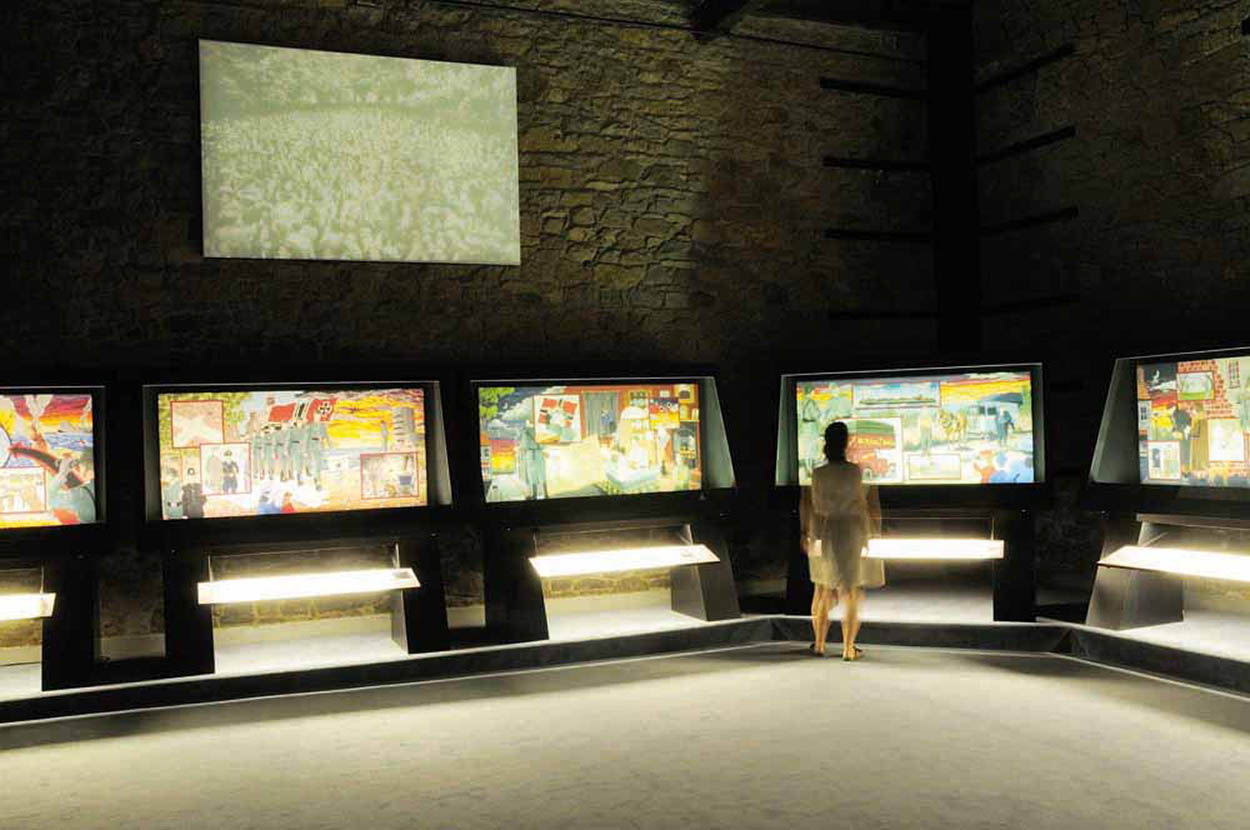
There are 12 richly embroidered tapestries in the Occupation Tapestry Gallery, detailing the moving story of life in Jersey during World War II.
Mockford & Bonetti/Apa Publications
Occupation Tapestry Gallery
Within the museum is the Occupation Tapestry Gallery 3 [map] comprising twelve separate large tapestries charting the story of the Occupation from the arrival of the Germans to their surrender to the British liberators in 1945.
These historically accurate and meticulously worked scenes were created by the twelve Jersey parishes to commemorate the 50th anniversary of Liberation. Themes range from ‘The Outbreak of War’ and ‘Deportation’ to ‘The Daily Life of Civilians’, such as the school-room scene of a boy yawning in a German lesson.
Return to Liberation Square, cross the Esplanade on the far side and take Mulcaster Street. About halfway up the road you’ll see the Lamplighter Pub, decorated with stuccowork depicting the figure of Britannia between two cherubs and a garland of fruit below. This was the work of Turnkey Giffard, a prison warden who entertained his inmates by showing them how to carve. Take the next turning left into Bond Street, where Regency and Victorian buildings retain some of their original features.

Looking up to the square tower of the Church of St Helier.
Mockford & Bonetti/Apa Publications
Church of St Helier
On the right stands the pink granite Church of St Helier 4 [map] (normally open during daylight hours), the largest of the parish churches. The seafront used to come right up to the church, and the square tower served as a useful observation post. The stretch of land between here and the sea was reclaimed from the end of the eighteenth century for town housing and warehouses.
St Helier
The hermit Helerius was murdered by axe-wielding Saxon pirates. He was later canonised, and his death is commemorated by the pair of crossed axes which feature on the St Helier parish crest. According to local folklore, after Helerius was murdered, he picked up his severed head and carried it for 200 metres/yds to the shore. Every year on the Sunday closest to 16 July, St Helier’s day, a procession makes its way to the Hermitage Rock and a wreath is laid at the entrance of the oratory which was built over his cave.
The gate at the far end of the railings formed part of a screen used to segregate male and female prisoners during services in the Debtors’ Prison. Major Peirson, hero of the Battle of Jersey, is buried in the centre of the church, while Baron de Rullecourt, who led the enemy, merely has a simple memorial in the churchyard; the location of his grave is unknown.
Streets and sewers
Leave the church by the north side for Church Street. The name of the street looks somewhat prosaic beside the former French name, La Rue Trousse Cotillon or Pick Up Your Petticoat Street. The name dates from a less salubrious era when ladies had to lift up their dresses to avoid the drains and sewers. English settlers in St Helier in the mid-nineteenth century replaced some of the French street names with English alternatives that had no connection at all with the originals.
It was in the house on the opposite side of the road (now the United Club) where John Wesley, founder of Methodism, preached the Gospel in 1787. Wesley, who visited Jersey, Guernsey and Alderney, had a profound influence on the islanders, and by the 1820s chapels, large and small, in the vernacular Gothic or classical styles, were appearing all over the islands. The St Helier Methodist Centre (formerly the Wesley Grove Methodist Church) at the top of Halkett Place used to seat 1,600. Methodism still has a strong influence on many of the islanders and several of the churches are still in use.

Annual pilgrimage to Hermitage Rock.
Public domain

Bullet holes, fired by troops in the 1781 Battle of Jersey, can still be seen in the walls of the Peirson Pub in the now peaceful Royal Square.
Mockford & Bonetti/Apa Publications
Further along on the corner is Jersey’s first library, a Georgian building and one of the first on the island to be made of brick. At the end of Library Place, to the left, the obelisk was erected in 1855 to Pierre le Sueur, the Constable of St Helier who transformed the town by ridding the streets of streams of sewage, providing clean water, and installing a complete underground system.
Royal Square
Retrace your steps to Church Street, turning left into Royal Square 5 [map] , formerly the Market Place, where weekly markets-cum-fairs took place, prisoners awaited trial in a cage (public executions took place nearby) and where, on occasions, witches were burnt. Devil worship had spread to Jersey by the late sixteenth century, and witch trials were common. The sentence for a convicted witch was ‘to be hanged and strangled by the public executioner till death ensues, after that her body to be burned and entirely consumed’.
The name Market Place was changed to Royal Square in honour of King George II (1727–60), who donated £200 towards the creation of St Helier’s first harbour. An ostentatious statue of the king in the square shows him dressed as Caesar. Below the statue a proclamation stone commemorates the day in February 1649 when Jersey proclaimed Charles II King of England, after the execution of his father. During the English Civil War, the island had provided Charles with refuge on two occasions, the first time as the young Prince of Wales. He was not crowned king in England until 1660, and for over ten years he was acknowledged as the rightful king only in Jersey and Scotland. As a reward for Jersey’s loyalty, Charles gave Smith’s Island and some neighbouring islets off Virginia to Sir George Carteret with permission to settle. Carteret renamed them New Jersey.

The gilded statue of George II, posing as Caesar, in Royal Square.
Mockford & Bonetti/Apa Publications

Attractive 17th-century houses are now home to jewellers’ shops.
Mockford & Bonetti/Apa Publications
Battle of Jersey
In the centre of Royal Square a stone commemorates the Battle of Jersey, which took place in 1781. A French force of 600, led by Baron de Rullecourt, secretly landed at night on the southeastern tip of the island, at La Rocque. The Lieutenant-Governor of Jersey, Moses Corbet, who was still in bed, surrendered, tricked into believing that the French had an overwhelming army. But the British soldiers and Jersey Militia refused to lay down their arms and a heroic young English officer, Major Francis Peirson, led the local troops to victory in a brief but bloody battle in Royal Square. Both de Rullecourt and Peirson were killed in action. This was the last attempt by France to capture the island. The young hero was immortalised in John Singleton Copley’s painting of The Death of Major Peirson at London Tate Britain Gallery, a copy of which hangs in the Royal Court on Royal Square.
Royal Square today
Today Royal Square is a peaceful, shady spot, providing a retreat from the town traffic and alfresco pubs and cafés where. you can sit with a drink and watch the world go by. The building nearest to Church Street is the former Corn Market, preserving the original granite arches inside and now home to the Registry Office.
If you look carefully at the paving stones on this side of the square you’ll see a carved ‘V’ for Victory. This was cut by a local stonemason while relaying the stones during the German Occupation. Discovery could have led to deportation, so he hid the ‘V’ under a layer of sand. The letters ‘EGA’ and ‘1945’ were added after the Swedish Red Cross ship, the SS Vega, arrived towards the end of the Occupation with 750 tons of food parcels, relieving the islanders from near-starvation.
Jersey’s Constitution
The constitution of the States of Jersey comprises the offices of Bailiff, Lieutenant-Governor, who is the monarch’s representative on the island, the Dean of Jersey, the Attorney General and the Solicitor General – along with 8 senators, 12 parish constables and 29 deputies who are all democratically elected. The old committee system was abolished in 2005 and ministerial government introduced. A number of scrutiny panels keep an eye on the policies of the executive.
The Royal Court
On the south side of Royal Square, the central building is the Royal Court (1866), the island’s court of justice, with the arms of George II above the entrance. It was from the balcony to the right that Alexander Coutanche, Bailiff of Jersey, hoisted the Union flag on 8 May 1945 and relayed to the huge crowds Churchill’s message that the Channel Islands were to be liberated. East of here is the States Chamber, the island’s parliament.
Central Market
Peirson Place, beside the pub, leads to King Street (formerly Rue Derrière), a busy pedestrianised shopping thoroughfare. Turn right along King Street for Halkett Place, named after a former Lieutenant-Governor of Jersey who served with distinction at the Battle of Waterloo. Cross the street and turn left for the Central Market 6 [map] (Mon–Sat). Market stalls were banned from Royal Square in 1800 and a new site chosen on the corner of Halkett Place and Beresford Street.
The original was a splendid grand building, modelled on the City of Bath market. But to celebrate the centenary of the Battle of Jersey a new market was constructed in 1881 – which is the one you see today. This is a fine glass-roofed building with a wonderful array of fresh produce, including strawberries, asparagus, Jersey herbs and home-grown flowers. Apart from fruit and veg there are butchers and bakers, cafés, restaurants and delis selling island specialities.
Outside the post office in the Central Market, the red hexagonal pillar box (1851) designed by the novelist Anthony Trollope, was, according to Jersey, the very first in the British Isles. They were originally painted green, and it wasn’t until 1874 that the post boxes were painted the familiar red.

Watch out for giant lobsters at the Fish Market.
Mockford & Bonetti/Apa Publications

The Central Market entrance.
Mockford & Bonetti/Apa Publications
Fish Market
Leave the Central Market at the Beresford Street exit and turn right. Across the road, the Fish Market 7 [map] (also known as Beresford Market) has a spectacular selection of seafood and fish, both local and imported. Head down here at 7.30am to see the arrival of the catch of the day or make it later and enjoy a seafood lunch and glass of wine at The Blue Ocean within the market. From the Jersey waters come sea bass, wrasse, grey mullet, shrimps, live lobsters, spider and chancre crabs, bream and mackerel. Look out too for conger eels, though long gone are the days when these were caught in profusion around the Jersey shores. In the seventeenth century congers were so popular and abundant that the Channel Islands acquired the nickname of ‘the Kingdom of Congers’.
Market Shopping
Central Market overflows with culinary delights special to Jersey. Look out for les mèrvelles (small doughnuts), du nièr beurre (apple preserve), and cabbage loaf (bread baked wrapped in cabbage leaves).
Exit the Fish Market at its northern end, turn right along Minden Place and cross over Bath Street for the Jersey Arts Centre (31). Return to Bath Street, turning left for the West Centre, where you’ll meet a family of bronze Jersey cows, and a tiny toad or crapaud.
At the end of Bath Street, turn right into Queen Street, which with King Street, is the town’s main shopping thoroughfare. The next left will bring you into Hill Street, the street of advocates bristling with brass nameplates. Turn right for Mulcaster Street and first left for Pier Road.
Just up the hill on the right is La Société Jersiaise (www.societe-jersiaise.org), founded in 1873 and dedicated to the study of the history, archaeology and natural history of the island, the conservation of the environment and historic buildings, and the establishment of an island museum.
Jersey Museum and Art Gallery
Occupying a townhouse which used to stand on the seafront, the award-winning Jersey Museum and Art Gallery 8 [map] (www.jerseyheritage.org) gives you an excellent insight into Jersey life and history over the ages.
The house was built in 1818 by a wealthy shipowner who contributed in 1820 to the cost of land reclamation and a harbour-building scheme (now Commercial Buildings). The two upper floors have been lovingly restored and fitted out with period furniture to show how it would have looked like in Victorian times, when it was occupied by a doctor and his family.
The exhibition starts with a re-creation of the Old Stone Age site of La Cotte de St Brelade, showing the figures of Palaeolithic man on the rock face and the bones of prehistoric woolly rhino found at the foot of the cave. The finds at this Old Stone Age site prove that primitive man used the ravine as a ‘funnel trap’, charging the prehistoric beasts over the cliff edge to their deaths. On the same floor, don’t miss the Story of Jersey film, with fascinating pre-war footage of Jersey; nor Lillie Langtry’s immaculate Victorian travelling case.

Ancient remains on display at the Jersey Museum.
Mockford & Bonetti/Apa Publications
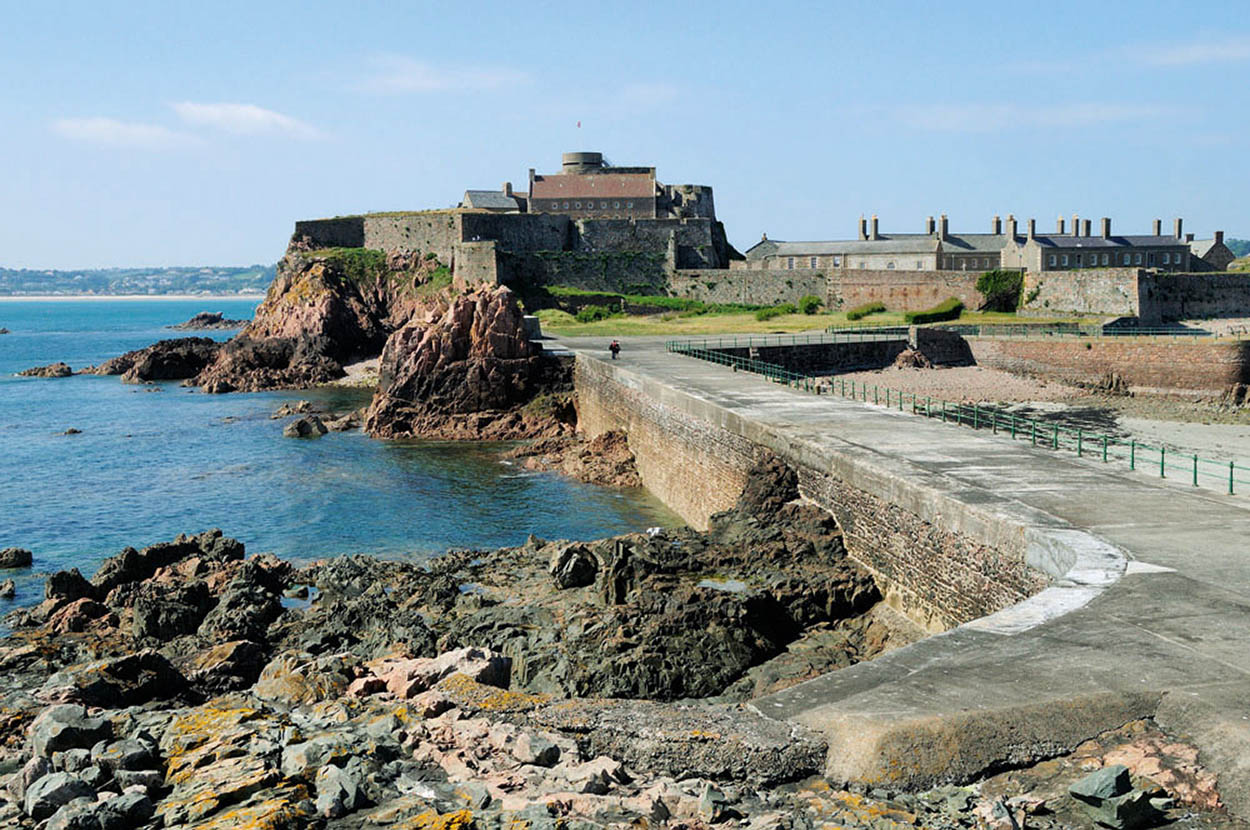
Elizabeth Castle from Hermitage Rock.
Mockford & Bonetti/Apa Publications
The Jersey Lily
Highlights of Jersey Museum’s art gallery are the two portraits of Lillie Langtry, by John Everett Millais and Sir Edward Poynter. Renowned for her beauty and pure white skin, she was nicknamed the Jersey Lily (the flower she is holding in Millais’s painting is in fact a Guernsey not a Jersey lily). Both portraits caused a sensation at London’s Royal Academy in 1878 – when Lillie was the acknowledged mistress of the Prince of Wales.
When Jersey’s cave dwellers were stampeding rhino and mammoth off the clifftops Jersey was still attached to the Continent. A display on the first floor shows how the sea level rose and the Channel Islands were formed. A spectacular long torc in twisted gold, discovered in St Helier, hints at the prosperity of the Bronze Age, pre-2000 BC. Other exhibits cover the main events of the island’s dramatic history as well as traditions and trades such as shipbuilding, knitting and oyster catching.
Elizabeth Castle
No visit to St Helier is really complete without a trip to Elizabeth Castle 9 [map] one of Jersey’s major historic monuments (www.jerseyheritage.org). Lying on an islet in St Aubin’s Bay, the castle can be reached via the Esplanade, beyond Liberation Square, on the landward side. Follow signs for the tourist office, then continue on the Esplanade until you see the Castle Ferry kiosk on the waterfront. Visitors can either go by foot along the 0.6-mile (1km) causeway at low tide or catch the amphibious Castle Ferry (not included in the castle entrance fee), which travels at all tides.
Construction on the castle began in the late 16th century, by which time Mont Orgueil, built for bows and arrows, was becoming increasingly exposed. Sir Walter Raleigh, the island’s Governor, who lived at the castle from 1600, called it Fort Isabella Bellissima (Elizabeth the most Beautiful), in tribute to his Queen, Elizabeth I. It was not until the 1640s, when Jersey had been drawn into the English Civil War, that the castle − which by now had grown considerably in size − came into its own. Charles II, then Prince of Wales, took refuge here, and did so again after the execution of his father. During the war, Sir Philip Carteret, then Governor, resisted a siege here for 50 days, and the castle was the last of Jersey’s strongholds to surrender. Defeat came in December 1651 when a shell from St Helier Hill (now Fort Regent) hit the abbey church and exploded the powder magazine. The Parliamentarians held Jersey for the next nine years.

The Jersey Museum, a superb four‑storey merchant’s house.
Mockford & Bonetti/Apa Publications

Elizabeth Castle is accessible at all times by the amphibious Castle Ferry, or on foot at low tide.
Mockford & Bonetti/Apa Publications
Fit for a King
Follow in the footsteps of Sir Walter Raleigh and King Charles II and stay at Jersey’s famous fortress. The small apartment (sleeping 4–6) within Elizabeth Castle may not be on the same scale as the Governor’s house in the seventeenth century, but for those with a sense of adventure it’s a wonderful spot to stay. Tides isolate the castle twice daily, but amphibious ferries provide a service during opening hours (bookings through Jersey Heritage at www.jerseyheritage.org).
Visiting the Castle
The fortifications you see today are divided into three: the oldest, Upper Ward, at the top, the Lower Ward beneath it and finally the Outer Ward. The oldest sections date from the 17th century, with the Guard House, hospital and workshops added in the early 19th century. The buildings around the Parade Ground house exhibitions covering the history of the castle, the development of the cannon and the story of the Royal Jersey Militia. The Militia served the island for around 600 years, and in their heyday numbered over six thousand local men, divided into five regiments. To reinforce the military theme, Gunner Graves fires the noonday gun.
From the Parade Ground it’s easy to miss the access up to the older Upper Ward, also called the Mount. For the best views of the coast, climb up to the gunnery control tower. This was built by the Germans, who modernised the castle with bunkers and battlements. Over to the east you can see Fort Regent, which took over as the island’s main fortress after Elizabeth Castle. Built into the mount is the Governor’s house, where Sir Walter Raleigh lived – though he was off the island for most of his tenure.

Join in the re-enactment of the Gunner’s Parade at Elizabeth Castle.
Mockford & Bonetti/Apa Publications
On regular days throughout the season history is kept alive at the castle by displays of artillery, military parades and firing of the black powder cannons. There is plenty of audience participation, and visitors may be dragooned into drill practice and marching the Parade Ground!
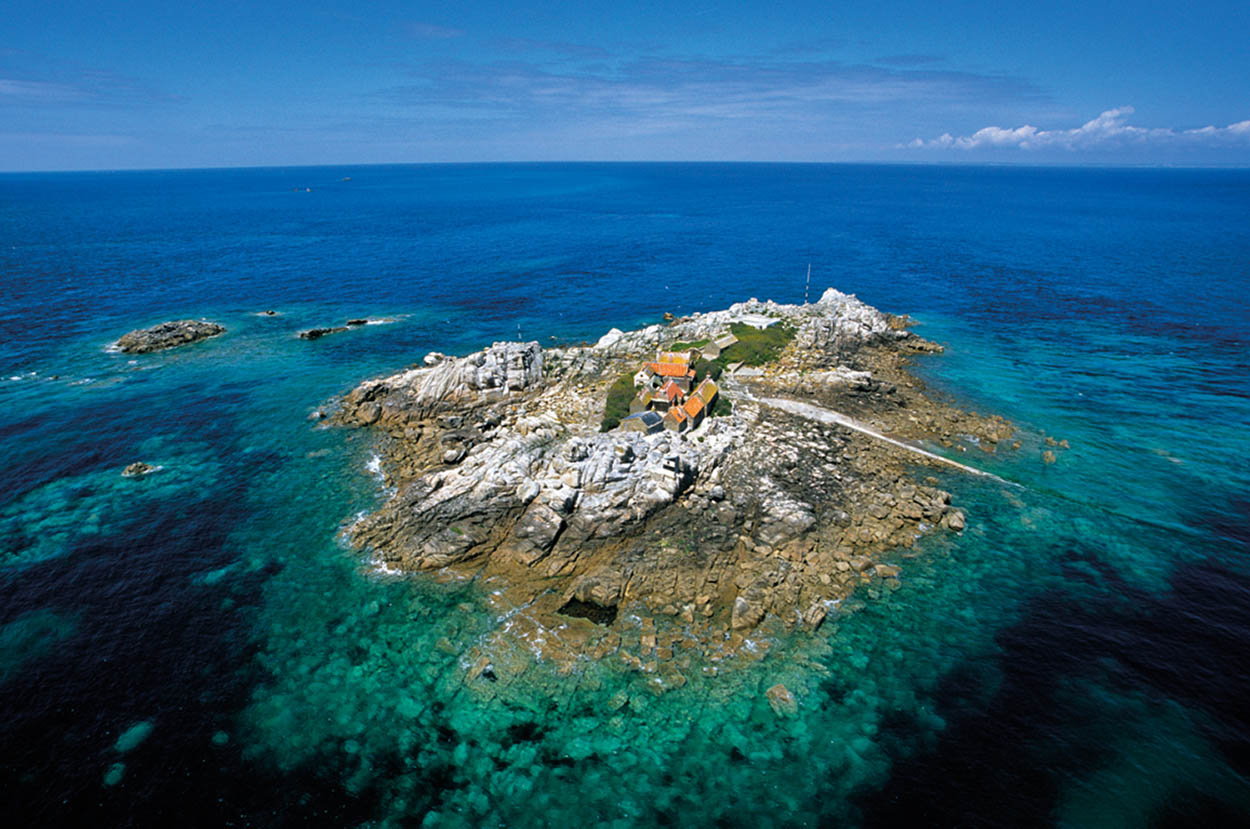
Aerial view of cottages on Les Minquiers.
Getty Images
Views to Fort Regent
Fort Regent, visible from Elizabeth Castle, was built in 1806–14 on a granite hill above St Helier and took over as the island’s main fortress. It was built at enormous expense as a protection against further attacks from France. Napoleon had acted angrily over Jersey profiteering from French vessels: “France can tolerate no longer this nest of brigands and assassins. Europe must be purged of this vermin. Jersey is England’s shame.” Troops were stationed here for many years, but the French threat ended with the English victories at Trafalgar in 1805 and Waterloo in 1815, and the fort was never actually to fulfil its function. Today the most conspicuous feature of the fort is the modern white dome above the walls and bastions which survive from the original structure.
Les Minquiers
From Elizabeth Castle’s gunnery control tower views stretch all the way south to Les Minquiers (known as ‘The Minkies’), a group of rocky islets 9 miles (14km) offshore. Ownership of the reef and that of Les Ecréhous, the rocky islets between Jersey and Normandy, has on occasions been a matter of dispute between Jersey (backed by the UK) and France. In 1953 a battle was fought out at the International Court of Justice in The Hague. England won, much to the chagrin of the French. There are still occasional attempts to raise the Tricolore on the reefs, mainly by French fishermen asserting a claim to fishing rights off the islets.
General Conway’s Dolmen
In 1785, during defence constructions on the hill where Fort Regent now stands, an extensive dolmen was discovered resembling a mini Stonehenge. Since the grave was impeding construction of the fort, it was presented as a retirement present to General Conway, then Governor of the island. The capstones and mighty megaliths – each weighing around 140 tons – were shipped across the Channel and taken up the Thames to grace the general’s private estate upstream from Henley-on-Thames, where the dolmen stands today.
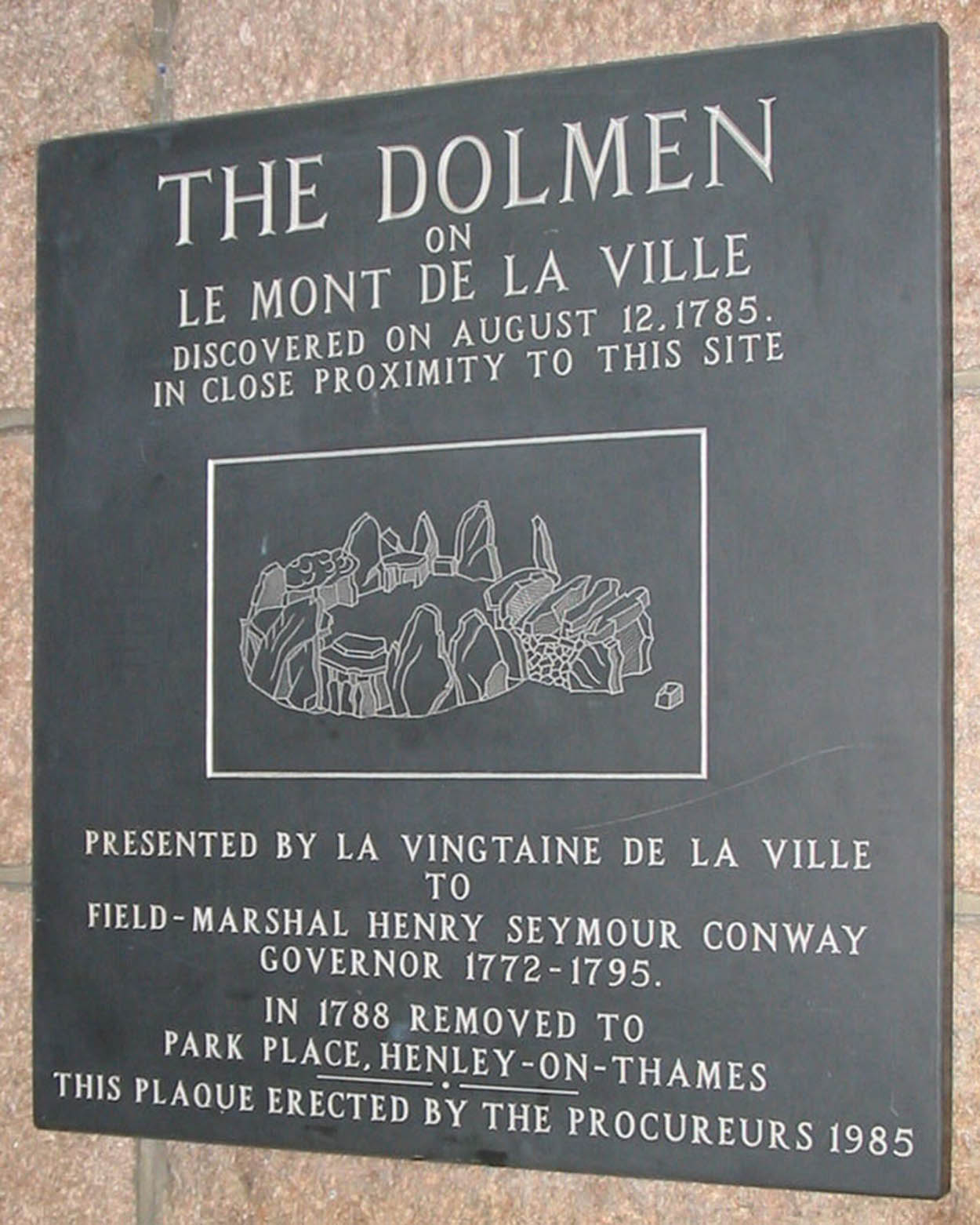
Plaque commemorating the dolmen, Vingtaine de la Ville.
Public domain
In 1958 the fort was sold back to the States of Jersey for £14,500, the original price of the land, and the building was then converted into a leisure centre.

La Frégate café, resembling an upturned boat, is part of St Helier’s Waterfront.
Mockford & Bonetti/Apa Publications

Freedom Tree sculpture by Richard Perry, on the Waterfront.
Mockford & Bonetti/Apa Publications
The fort used to be the site of the last working signal station in the British Isles, used for weather warnings, high tides, shipping movements – and to indicate when the plane carrying national newspapers had left London and arrived in Jersey.
The signal station closed in 2005 through lack of funding, but a team from the Maritime Museum boat shop still maintains a signal system for strong gales – or flags to mark Liberation Day or Royal birthdays.
The Union flag on the west bastion is lowered to half-mast only when a monarch dies, though an exception was made on the death of Diana, Princess of Wales.
The Waterfront
As you leave Elizabeth Castle – whether by foot or amphibious craft – the views to the west are rather more alluring than those to the east.
Indeed, St Helier’s Waterfront ) [map] is Jersey’s eyesore, characterised by a series of utilitarian high-rise buildings and large car parks. At drawing-board stage the aim was to ‘breathe new life into the town and the island, enriching the quality of life for resident and visitor alike’. The leisure centre, clubs and fast-food outlets attract some of Jersey’s younger residents, but others keep their distance, and there is little to attract the tourist.

Musical entertainment draws a crowd at the Farm and Craft Market in St Helier.
Mockford & Bonetti/Apa Publications
Plain Sailing from St Helier
Cruising around the Jersey coast, racing a catamaran, spotting dolphins or seals, landing mackerel or sea bass or taking a ferry to France are all among the boating options. For visiting offshore reefs and seeing wildlife from a purpose-built rigid inflatable boat, go to www.jerseyseafaris.com. Standard cruise trips along 15 miles (24km) of the south coast depart from Albert Quay, St Helier.
The general feeling is that a huge potential has been sacrificed on the altar of the financial services sector, and that what could have been an attractive waterside, on the lines of other successful city waterfronts in Europe, is just there to provide housing, offices and parking for financiers.
To see for yourself, head south from the slipway, passing the upturned-boat shaped La Frégate café and the Jardins de la Mer. You’ll see the towering Radisson Blu Hotel on the Waterfront to the right, and ahead a multiplex cinema, fitness centre and leisure pool. By the time you get to Albert Harbour you might feel like an evening island cruise to see the rather more lovely cliffs and beaches to the west. Nevertheless, don’t miss the Harbour Gallery (https://theharbourgalleryjersey.com), Jersey’s largest art and craft gallery, and the Home mural.
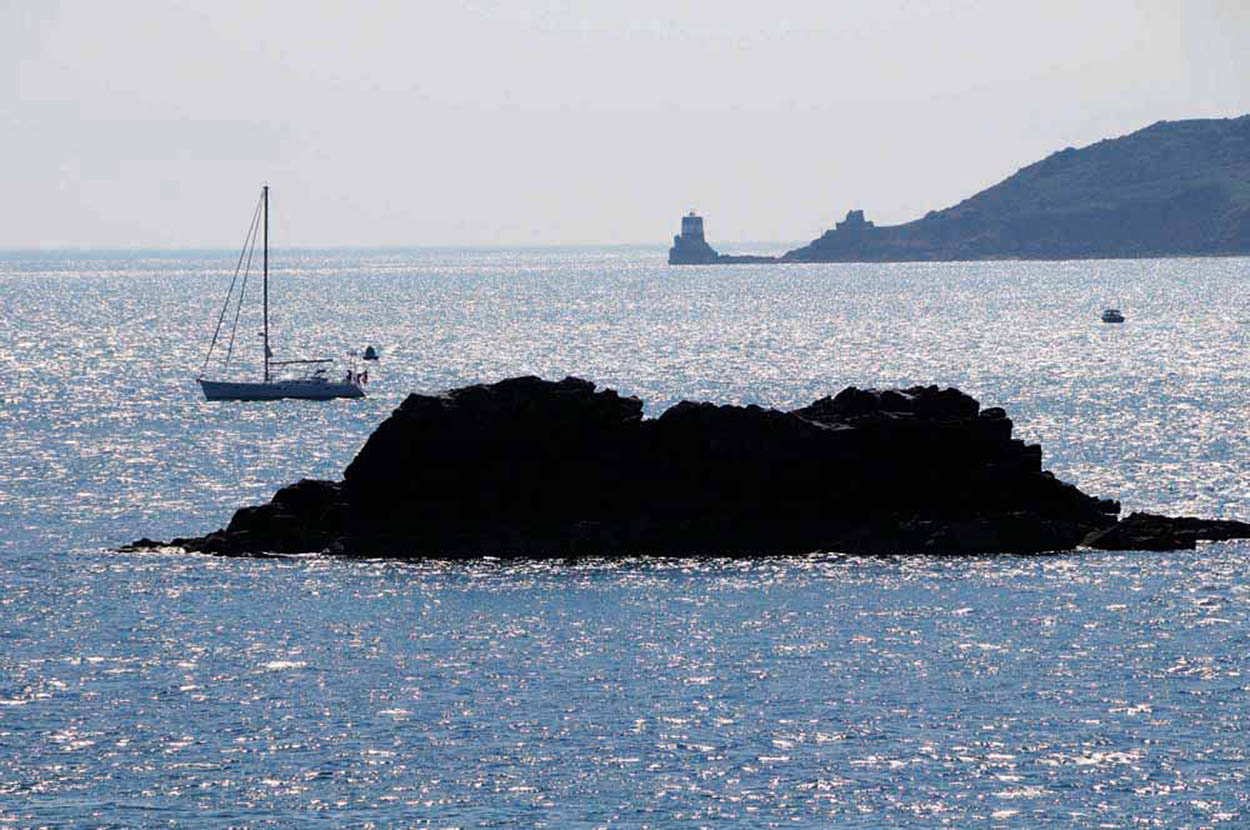
Boats can be hired by the hour, day or week.
Mockford & Bonetti/Apa Publications

Boats moored at Elizabeth Marina.
Mockford & Bonetti/Apa Publications
Eating Out
Awabi
63 Halkett Place; https://www.awabi.co.uk.
Named after the ormer (awabi in Japanese), this is a cool little place serving well-prepared pan-Asian dishes. It’s all housed in a stylish setting which feels like a cosy wine bar. Good value, and listed in the Michelin Guide. ££
Banjo
8 Beresford Street; www.banjojersey.com.
Part of the Jersey Pottery emporium, Banjo was converted from a former Victorian gentlemen’s club and comprises a stylish brasserie and cocktail bar, along with four chic guest rooms on the second floor. Popular at weekends, so book in advance. £££
Bohemia
Green Street; www.bohemiajersey.com.
The finest food on the island, served in the stylish surroundings of the Club Hotel and Spa, a favourite with celebrities. The chef is Steve Smith, one of the youngest chefs in the UK to achieve a Michelin Star, at the tender age of 24. He fuses tradition with innovation-producing dishes such as roasted scallops with celeriac truffle, apple, smoked eel and a truffle vinaigrette. £££
CaféJac
Jersey Arts Centre, Phillips Street; www.cafejacco.uk.
Busy, friendly café where you can turn up any time of day for light bites or full meals. The fluffy pancakes are legendary, and there’s a good choice of vegetarian dishes. It’s good value and tables outside make it a popular summer choice. £
Cock and Bottle
18 Royal Street; www.liberationgroup.com.
Traditional pub with alfresco dining on the square (heaters and blankets provided); perfect on a sunny day to enjoy classic French dishes alongside pub favourites, with chilled wine or a beer. Inside, original eighteenth-century features have been retained. ££
The Fresh Fish Company
Victoria Pier;
www.jersey.com/fresh-fish-company.
Savour a crab sandwich or lobster claw with a sea view or select fish from the retail shop to grill on a beach BBQ. The company supplies many hotels and restaurants with local fish. ££
Jeju
Fish Market; https://www.facebook.com/jejujersey.
Named after the South Korean island, this small place serves traditional Korean and Japanese dishes using glisteningly fresh seafood from the surrounding stalls, and other local produce. £–££
Samphire
7−11 Don Street; www.samphire.je.
This is an acclaimed restaurant delivering consistently high quality cuisine in a stylish, sophisticated setting. Think foie gras with blood orange and cashew nuts or cauliflower with Romesco sauce, hazelnuts and salsa verde. £££
Tassili
Grand Jersey Hotel, The Esplanade; https://www.handpickedhotels.co.uk/grandjersey.
Hotel restaurant noted for its stylish setting and gourmet British cuisine. Seasonal dishes are given a decadent Jersey twist. £££